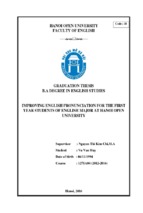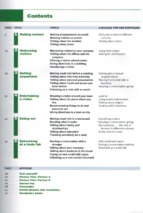NESUG 2007
Administration & Support
Managing Professional Development
Sharon L. Sutton, GlaxoSmithKline Pharmaceuticals, King of Prussia PA
ABSTRACT
In today’s business climate, technical training and professional development often take a back seat to budget
constraints and tight timelines. For instance, managers want to know how to get new hires up to speed quickly.
What are the basic SAS courses needed for programmer development? What to do with programmers who are
not novices but don’t have the intermediate skill set yet? In today’s market, not all programming is done by the
classical programmer of the past. What is the most efficacious way to organize SAS training for multifunctional
groups? When is it time to seek SAS training outside of the SAS Institute and use other vendors? How do you
choose and evaluate a vendor objectively? Do surveys really accurately assess training needs? While a lot of
programming can be learned from reading the manual and doing programming, formal instruction is sometimes
necessary. This presentation will explore these issues and offer possible solutions.
INTRODUCTION
Programmers traditionally come from a variety of backgrounds. Today, more than ever, it is very easy to learn the
basics of any programming language. Formal course work is not always necessary and more than a few programming professionals have prided themselves on being able to “pick up a manual” and readily master the basics. More often than not, self-learning takes place over a number of years, often driven by the work environment
in which one finds oneself or from knowledge gleaned from co-workers or the occasional course given by a vendor.
The majority of programmers are interested in professional development. Certainly, everyone wants to get beyond the entry level position and be able to accept more challenging projects. Even just to learn the programming
language in more depth is a credible goal.
Of course, professional development is influenced by many factors. Management wants productive employees
but has to balance the bottom line. There is no one professional organization for programmers that can claim to
represent all programmers. Many managers are not programmers and have difficulty managing their programmers beyond the basics. Beyond the basic skill set needed for Project A, what more is necessary?
By looking at issues around professional development for programmers, this paper seeks to raise the awareness
of this topic. This paper focuses primarily on SAS programming.
DEFINING A BASIC SKILL SET
Does one size fit all? No, of course not. When hiring a SAS programmer, you may find yourself with a list of “must
haves”. You may need your entry level programmer to have 6 months to a 1 year of SAS programming experience with no prior experience in project management. A job posting for an intermediate programmer obviously
requires a more demanding skill set.
Each organization will have some defined criteria of grading the programmer position. The criteria help to determine the skills that are valued most in a SAS programmer for that particular organization. The individual résumé
tends to focus on a list of specific courses and skills, while the job description operates in terms of functional
tasks and developmental concepts. For example, contrast the details of this résumé (Figure 1) against requirements of the job being sought (Figure 2):
1
NESUG 2007
Administration & Support
Figure 1
Résumé Details
Statistical Computing Packages
SAS (Base, Procedures, Access, Macro, Stat, Graph)
Programming Languages
SQL, PL/SQL, C/C++, Visual Basic, XML, Java
Computer Systems
PC, Unix, Mainframe
Database
Oracle, MS SQL server, Access
Figure 2
Job Description
Shall provide statistical programming expertise (preferably in SAS) in the production of analyses, tabulations,
graphics, and listings from clinical trial data. Key responsibilities and skills include, but are not limited to, the following: Contribute to the preparation of analysis plans. Prepare, document and test required programs and procedure data displays in an efficient manner for inclusion in integrated clinical, statistical reports and other similar
reports. Contribute to the integrated clinical/statistical report and other similar documents. Ensure analysis data
and programming code meet regulatory and company standards and are consistently structured to permit efficient
programming and reporting. Perform quality assurance procedures on work performed by others.
Perhaps, ten years ago, the most basic knowledge of SAS that a programmer should have could have been this
list:
•
Base SAS (includes debugging code)
•
SAS Macro Language
•
SAS Procedures (Proc Sort, Proc Datasets, etc.)
•
SAS Statistical Procedures (Proc Means, Proc Univariate, Proc Summary, Proc Tabulate, Proc Freq)
•
SAS Graph
The bullet-list items above are very broad categories. For instance, basic knowledge of the SAS Macro Language
does not guarantee that your programmer will have the ability to write efficient macros or be able to use the
Macro Language in open code.
Today’s “must-have” basic skills may look like this:
•
Base SAS (includes debugging code)
•
SAS Macro Language
•
SAS Procedures (Proc Sort, Proc Datasets, etc.)
•
SAS Statistical Procedures (Proc Means, Proc Univariate, Proc Summary, Proc Tabulate, Proc Freq)
•
Incorporating SAS objectives into other software packages
2
NESUG 2007
Administration & Support
SAS Graph is missing from the list. There are more graphical software options available today. Some companies
are shifting away from SAS Graph as the main graphics package.
Once the core courses have been agreed upon, it helps to quantify and give a time frame to development. This
development plan specifies the programming professional by experience (i.e., new starter), the method of instruction (i.e., instructor) and the probable timeframe to take training (i.e., within 6 months to a year of starting the job).
It also provides a rationale for the suggested method of instruction.
Figure 3
An example of a development model from GlaxoSmithKline Pharmaceuticals – UK New Starter Program
New starters may be introduced to SAS via computer based training (CBT) which enables the user to work at
their desk using a menu driven system to solve various SAS problems. This can be a useful introduction to SAS
enabling the user to familiar with the software before attending a formal course.
On-the-job training can be arranged via the 'guide' who can go through some of the basic SAS procedures and
may set simple tasks which need to be completed for a particular study. Various SAS manuals such as "SAS
Language" and "SAS Procedures" are available in the department and can be used as reference on an on-going
basis.
Suggested new starter courses:
• SAS Programming (within the first few weeks if they have little or no SAS experience)
• SAS Macro Language (within the first 6 – 12 months)
• SAS Efficiency (within the first 2 years)
The timings given are only a guide and will vary depending on the experience of the programmer. The actual
course name may vary among training companies.
Other SAS courses which may also be of use on an as-needed basis:
• SAS Graph
• PROC REPORT
BEYOND THE BASICS
Once the basics have been mastered, further professional development needs to be handled in a systematic way.
Professional development is mediated by the mindset of the organization, the current business climate, the manager-employee relationship and resilience and resourcefulness of the employee. The GROW model (Figure 4)
can be used as a method of self-coaching for personal success and professional development (1). It’s a good
place to start and can help the programmer define a focus for future development.
Figure 4
GROW Model of Professional Development
1. Goals – What does the individual want to achieve?
> Programmer and manager agree on specific objectives.
2. Reality – What is happening now?
> Can the objective be accomplished given the current resources, budget, time constraints, etc?
3. Options – What could the individual do?
> Identify specific steps. What are you best at doing? How can you use this skill to achieve your goal?
3
NESUG 2007
Administration & Support
4. Wrap Up – What will the individual do?
> Networking: User groups, informal peer groups, mentors, conferences (attendee/presenter), workshops
Having mastered the basics, programmers naturally want to learn about techniques and nuances that are not
available in the formal training from via the SAS Institute. Often, the issue is to identify reliable training that suits
the needs and budget of the customer. There are many individuals and business entities that offer SAS training.
Choosing an independent vendor to provide your training can be can be a challenge. To make get the maximum
out of your training dollars, keep these points in mind:
•
Allow enough time to gather a few names. Ask your colleagues, members of user groups, etc.
•
Clearly define your training goals, regardless of whether the recipient of training is a group or individual
•
Communicate your needs clearly and concisely, and put them in writing. Make sure everyone involved
knows what the needs are.
•
Allow adequate time for the vendor to prepare and deliver the training
•
Review the course outline before training starts, allowing adequate time to make revisions, if necessary
•
Evaluate the training and give feedback to the vendor as soon as possible
INDUSTRY STANDARDS AND TRENDS
Perhaps, the best place to start is to acknowledge that the notion, “one size fits all”, does not exist. Each industry
has different needs and so, it follows, that within an industry, each company’s needs differ as well. According to
Certification Magazine, the SAS Institute started its SAS Certified Professional Program based on the feedback
from its customers and users (2). Certification was seen as a way to enhance credibility of the two-dimensional
skills that are listed on a résumé. Certification naturally has its detractors and supporters. On the positive side:
• Certification is a concept that employers can easily relate to
• Certification supports a common and minimal expectation
• Certification increases marketability
• Certification has industry recognition
• Certification removes the guesswork around acquiring basic skills
In fact, there are a growing number of certification programs at educational institutions. Some programs are direct
collaboration with the SAS Institute, such as Philadelphia University’s, SAS Programming Certificate for the Pharmaceutical Industry(3). This is a six-month program that provides training in these courses:
• SAS Essentials
• SAS Reporting and ODS
• SAS Programming
• SAS Macro Language
• SAS SQL Processing
SAS professionals are so in demand that some institutions are offering customized certification programs. For
instance, the University of Memphis offers to its undergraduates of any major, a certificate program, Data Analysis and Programming Using SAS Software, that “will give the skills necessary to be more competitive in the job
market”(4). The certificate program consists of three newly developed 3 hour credit courses:
• Introduction to Data Structures and Cleaning
• Programming concepts and Techniques
• Data to Information
The interesting fact about these “newly developed” courses is that they teach the SAS programming language
and do not refer to as single SAS course name (i.e., SAS Macro Language).
But one has to be careful. The University of California Berkeley Extension offers a series of five SAS courses
4
NESUG 2007
Administration & Support
from which one receives a certificate, but one is not a SAS certified professional (5). Business needs drive demand for competent technical workers. Educational institutions and other software consulting businesses understand the rewards of producing skilled individuals who can boost productivity quickly.
CONCLUSIONS
Professional development is an integral and invaluable part of a programmer’s career. Programmers must be aggressive and focused in their objectives for professional development. Advancing technical knowledge is made
easier by the different learning modalities that are readily available. The decision to become a certified SAS professional has to be weighed carefully. The ability to network through professional organizations and user groups
enhances opportunities for development.
REFERENCES:
1. Whitmore, Sir John. The GROW model of coaching and self coaching. As referenced in GlaxoSmithKline
Community Training Center Database, Managers, Develop Others and Improve Team
Performance. 2007.
2. Hopper, Dawn
ary
“SAS Certified Professionals: Taking analytics up a notch”. Certification Magazine. Febru2006.
3. Philadelphia University Home Page SAS Programming Certificate for the Pharmaceutical Industry.
4. University of Memphis SAS Information Page Undergraduate Certificate in Data Analysis and Programming
Using SAS Software.
5. University of California Berkeley Extension Using the SAS System (5-Course Series).
ACKNOWLEDGMENTS
SAS is a Registered Trademark of the SAS Institute, Inc. of Cary, North Carolina.
CONTACT INFORMATION
Your comments and questions are valued and encouraged. Contact the author at:
Sharon L. Sutton
GlaxoSmithKline Pharmaceuticals
2301 Renaissance Blvd
King of Prussia, Pennsylvania
Work Phone: 610.787.3845
Fax: 610.787.7004
Email: [email protected]
************************************************
5




















